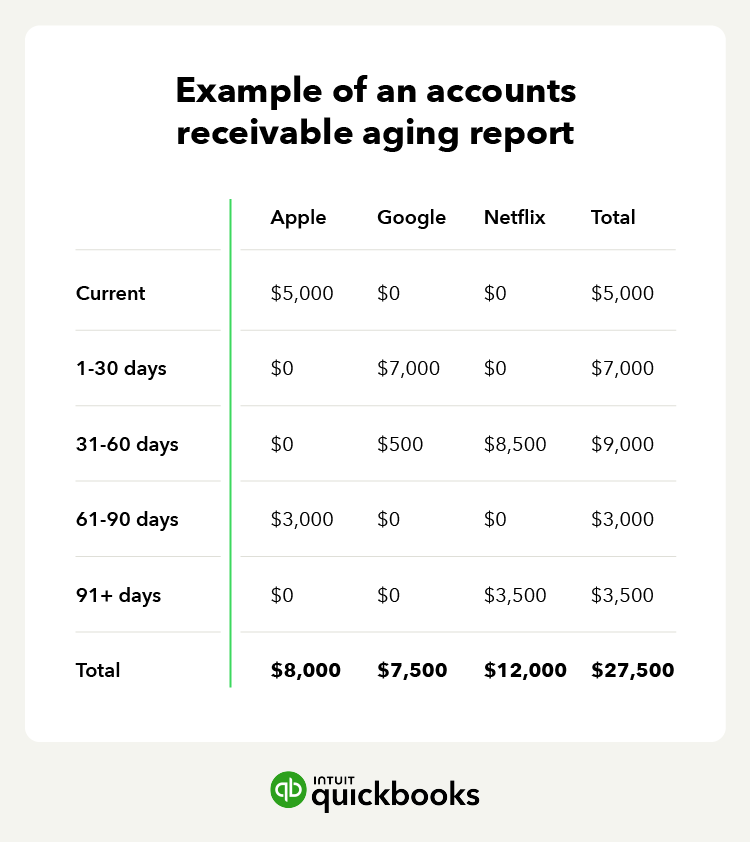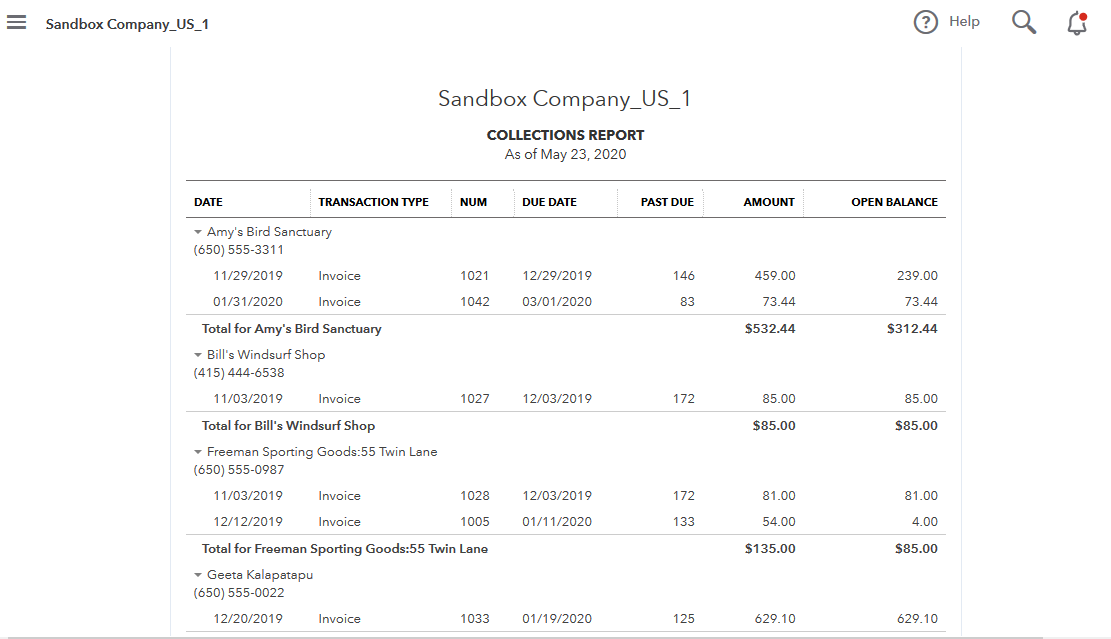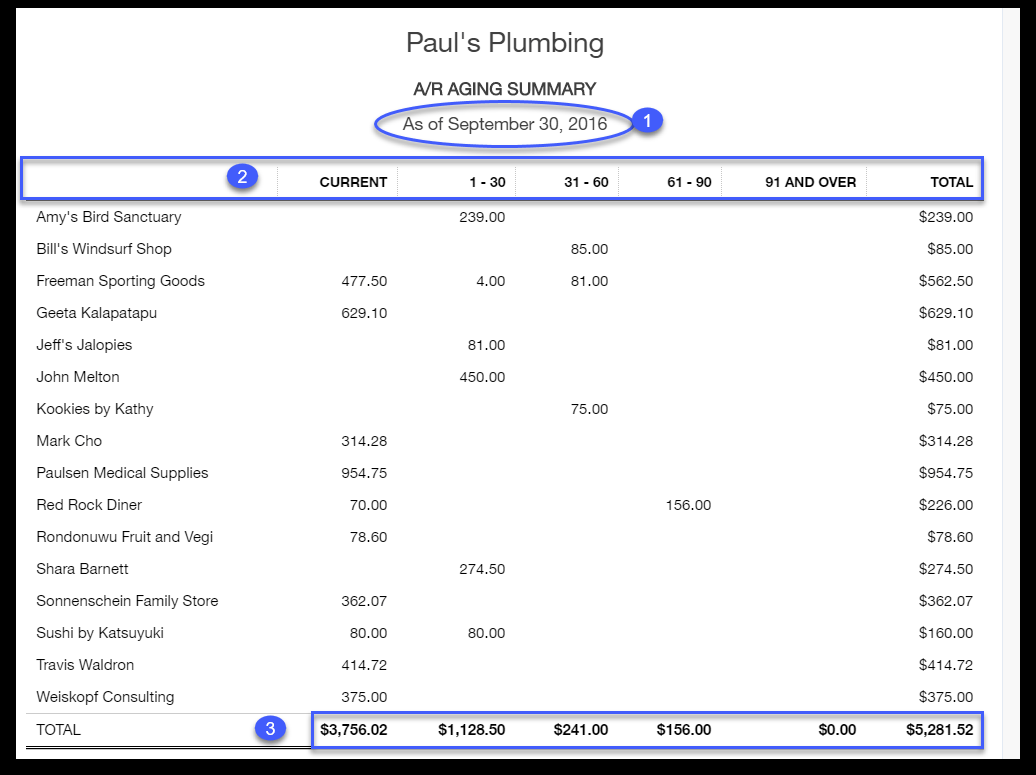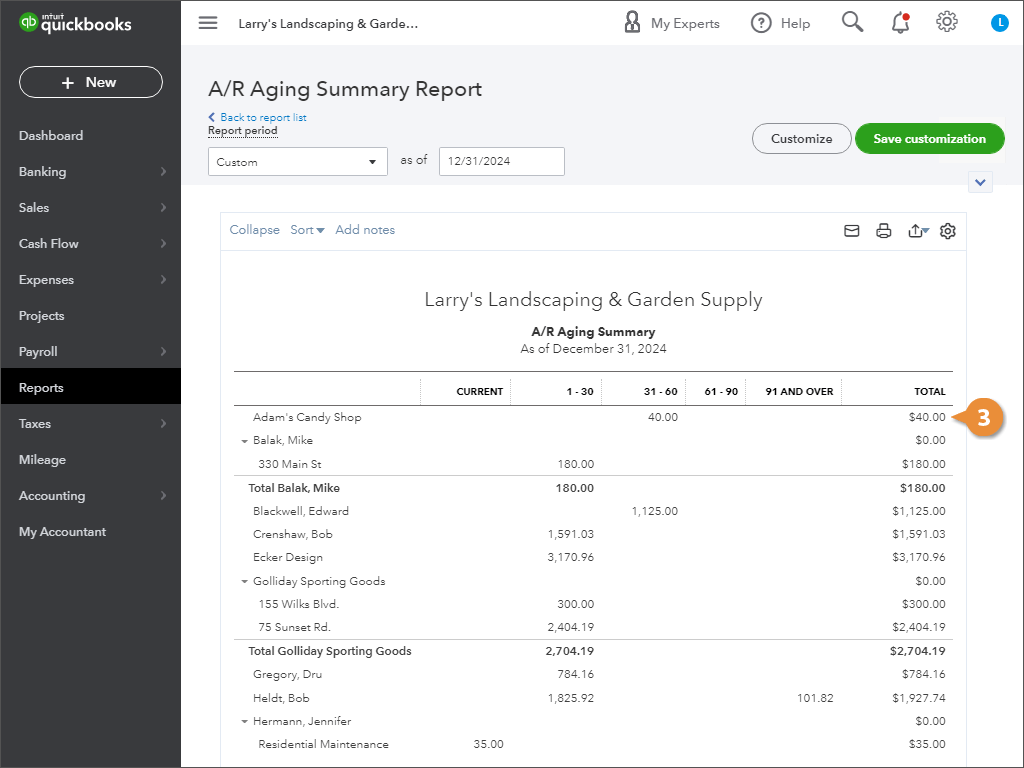Quickbooks Accounts Receivable Report
Quickbooks Accounts Receivable Report - Accounts receivable is an asset account recorded as current assets on your company’s balance sheet. A user asks how to find an accounts receivable report that shows month end balance by client over specific time frame. It is the amount that. An accounts receivable aging report groups a business's unpaid customer invoices by how long they have been outstanding.
A user asks how to find an accounts receivable report that shows month end balance by client over specific time frame. An accounts receivable aging report groups a business's unpaid customer invoices by how long they have been outstanding. Accounts receivable is an asset account recorded as current assets on your company’s balance sheet. It is the amount that.
A user asks how to find an accounts receivable report that shows month end balance by client over specific time frame. It is the amount that. Accounts receivable is an asset account recorded as current assets on your company’s balance sheet. An accounts receivable aging report groups a business's unpaid customer invoices by how long they have been outstanding.
Accounts receivable aging report Guide QuickBooks Canada Blog
It is the amount that. A user asks how to find an accounts receivable report that shows month end balance by client over specific time frame. An accounts receivable aging report groups a business's unpaid customer invoices by how long they have been outstanding. Accounts receivable is an asset account recorded as current assets on your company’s balance sheet.
RPPC Inc QuickBooks Accounts Receivable Aging Reports YouTube
Accounts receivable is an asset account recorded as current assets on your company’s balance sheet. An accounts receivable aging report groups a business's unpaid customer invoices by how long they have been outstanding. It is the amount that. A user asks how to find an accounts receivable report that shows month end balance by client over specific time frame.
Accounts Receivable Aging Report
An accounts receivable aging report groups a business's unpaid customer invoices by how long they have been outstanding. A user asks how to find an accounts receivable report that shows month end balance by client over specific time frame. Accounts receivable is an asset account recorded as current assets on your company’s balance sheet. It is the amount that.
QuickBooks Tip An Audit Trail for Accounts Receivable QuickBooks
An accounts receivable aging report groups a business's unpaid customer invoices by how long they have been outstanding. Accounts receivable is an asset account recorded as current assets on your company’s balance sheet. A user asks how to find an accounts receivable report that shows month end balance by client over specific time frame. It is the amount that.
How To Run an Accounts Receivable Aging Report in QuickBooks Online
Accounts receivable is an asset account recorded as current assets on your company’s balance sheet. An accounts receivable aging report groups a business's unpaid customer invoices by how long they have been outstanding. It is the amount that. A user asks how to find an accounts receivable report that shows month end balance by client over specific time frame.
Generate an Accounts Receivable Aging report (Back Office)
It is the amount that. An accounts receivable aging report groups a business's unpaid customer invoices by how long they have been outstanding. Accounts receivable is an asset account recorded as current assets on your company’s balance sheet. A user asks how to find an accounts receivable report that shows month end balance by client over specific time frame.
How to get QuickBooks aging report by customer PayorCRM
It is the amount that. An accounts receivable aging report groups a business's unpaid customer invoices by how long they have been outstanding. Accounts receivable is an asset account recorded as current assets on your company’s balance sheet. A user asks how to find an accounts receivable report that shows month end balance by client over specific time frame.
QuickBooks Basics Accounts Payable YouTube
Accounts receivable is an asset account recorded as current assets on your company’s balance sheet. It is the amount that. An accounts receivable aging report groups a business's unpaid customer invoices by how long they have been outstanding. A user asks how to find an accounts receivable report that shows month end balance by client over specific time frame.
How to Run an Accounts Receivable Aging Report in QuickBooks Online
Accounts receivable is an asset account recorded as current assets on your company’s balance sheet. It is the amount that. A user asks how to find an accounts receivable report that shows month end balance by client over specific time frame. An accounts receivable aging report groups a business's unpaid customer invoices by how long they have been outstanding.
Accounts Receivable Aging CustomGuide
An accounts receivable aging report groups a business's unpaid customer invoices by how long they have been outstanding. It is the amount that. A user asks how to find an accounts receivable report that shows month end balance by client over specific time frame. Accounts receivable is an asset account recorded as current assets on your company’s balance sheet.
It Is The Amount That.
An accounts receivable aging report groups a business's unpaid customer invoices by how long they have been outstanding. A user asks how to find an accounts receivable report that shows month end balance by client over specific time frame. Accounts receivable is an asset account recorded as current assets on your company’s balance sheet.









